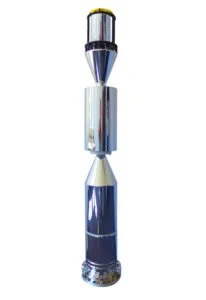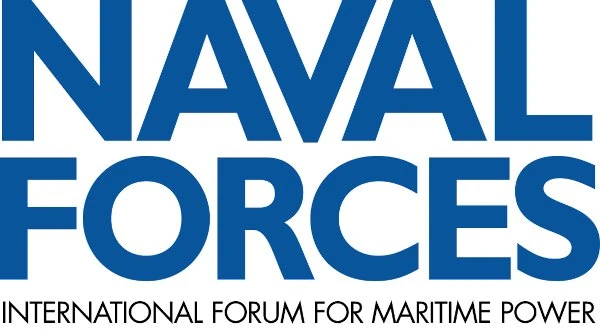The rapidly developing communication technologies in the commercial sector provide opportunities for the naval industry to meet military communications needs and new requirements in the maritime combat environment.
This is mainly due to their availability in the market, technology readiness and low prices. Although communication technologies such as VHF (very high frequency) and UHF (ultra-high frequency) are still an essential part of naval communication, other technologies such as 2G, 4G, 5G and WLAN (wireless local area network) can expand the scope of naval military communication services.
AT-7000 Series – multifunctional and military intelligence antenna system
Some naval communications systems already include the tactical private 4G LTE communication network to achieve sufficient throughput for reliable data collection in real-time and over long distances.[1] The attractiveness and high efficiency of 5G technology make it necessary to consider the implementation of civilian standards in the military domain. Since the direct use of commercial standards in military systems cannot simply be adopted due to various premises, the civilian 5G standard is currently being examined for its usefulness in military applications.[2] 2G technology can be retained as a backup solution for military naval communication systems. 2G, 4G and 5G technologies can help keep the cost of using services lower than satellite communications (SATCOM) and enable communications independent of commercial satellite service providers. WLAN technology can be used to set up tactical private ad hoc networks.[3]
In addition to the need for mobile communication, navies around the world also require military intelligence systems to combat all modern threats, e.g. to detect and neutralise drones. To enable all the above functions, navies prefer a powerful ‘all-in-one’ multifunction antenna and antenna subsystems, especially for submarines, as space is limited there.
The AT-4000 multifunction antenna system for submarines is one of the best-selling antennas AEROMARITIME Systembau has supplied to various navies around the world over the last 40 years, covering VLF/HF-Rx, VHF, UHF, IFF, LINK-16 and L-Band SatCom. The AT-4000 antenna system was developed as a communications antenna and is not intended for military intelligence. Therefore, it is obvious that a new antenna system needs to be developed that is suitable for both military intelligence and naval military communication, including the above mentioned communications technologies.

The AT-7000 series multifunction and military intelligence antenna system for submarines is designed to detect and evaluate communicative (communications intelligence; COMINT) and non-communicative (electronic intelligence; ELINT) signals transmitted in the submarine operating environment based on the electromagnetic signature. As the name suggests, the AT-7000 series antenna system fulfills both multifunctional communications and military intelligence requirements. The AT-7000 series antennas have the same form factor as their predecessor, the AT-4000 series. The AT-7000 series antenna system consists of the antenna itself, a splitting interface, a signal analyzer and recording system and an optional RFDU. RFDU is an abbreviation for radio frequency distribution unit. The RFDU is an optional component of the AT-7000 antenna system. If a communications system contains more than one VHF-LOS (line of sight), UHF-LOS and GPS antenna, these multiple antennas can be easily and efficiently connected to the corresponding radios by using the RFDU unit.
As a multifunctional communications antenna, the AT-7000 covers VHF-LOS, UHF-LOS, IFF, LINK-16 and L-band services, with INMARSAT-C and IRIDIUM being the most popular L-band services. The AT-7000 is also designed for 2G, 4G and 5G cellular services and WLAN services. It has receive-only functionality for VLF and HF bands. In military intelligence mode, the AT-7000 captures electromagnetic signals from its environment in the range of 10kHz (kilohertz) to 6GHz (gigahertz), and evaluates the captured signals in the signal analyzer and recording system after they have been passed through the splitting interface. The splitting interface is used to separate the multifunctional communication from the military intelligence services. Both the multifunctional communications services and the military intelligence services can be used simultaneously, but the AT-7000 series antenna system is designed so that the multifunctional communications services can be muted while the military intelligence services are in operation. Therefore, a dual interface is possible. The signal analyzer and recorder system evaluates the signals captured by the AT-7000 antenna. Although it is a core part of the signal evaluation, it is a third-party product for AEROMARITIME. There are several signal analyzer and recorder systems on the market and the AT-7000 antenna system is compatible with most of them.
References:
[1] https://www.linkedin.com/pulse/how-private-4g-lte-solved-communications-issues-dcns-kareen-frascaria
[2] Zmysłowski, D. et al. (2023): Naval use cases of 5G technology,– TransNav International Journal on Marine Navigation and Safety of Sea Transportation, 17(3)
[3] https://atos.net/wp-content/uploads/2019/02/atos-airlynx-tactical-private-lte-network-brochure.pdf

